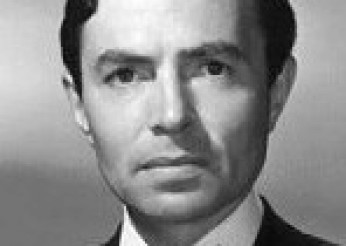Jean Renoir anticipated and influenced French Poetic Realism, Italian Neo-realism, the authors of the New Wave, especially Truffaut and Chabrol…
Frenchman Jean Renoir’s film opus is a cinematic tradition of its own! The famous author of the milestone film La Regle du jeu (The Rules of the Game, 1939) used his mighty, inquisitive and flexible spirit (directed at the theatre, literature, painting and above all film heritage) to innovate the methodological instrumentation of the media by building a strong opus with lasting values. In those historical circumstances Jean Renoir anticipated and influenced the French poetic realism, Italian Neo-realism, the authors of the New Wave (especially Truffaut and Chabrol) - essentially he left his mark on the founders of the well-known movement in the end of the fifties in France that gave birth to the poetics of film modernism (and postmodernism).
In his first few films (Nana, 1926; Petite marchande d'allumettes/Little Matchbox girl, 1928; his first sound film On purge bébé, 1931), while raising “difficult” questions, he demonstrated his affinity towards vaudeville, wild and anarchic spontaneity and subversion, towards to the Dionysian, Comedia del Arte and Drame Gai.
The harsh side of his poetic realism from the beginning of the thirties (La Chienne/The Bitch, 1931.; La Nuit du Carrefour/The night at the crossroads, 1932) is sublimated in the third film of a coherent series: Boudu sauvé des eaux (Boudu Saved from Drowning, 1932). The film itself, besides the paradigmatic Michel Simon in the role of a bum who stirred up one bourgeois family, denounced the sole act of filming (crew members and curious bystanders can be seen in the scenes).
As the social-political consciousness grew in Renoir, so the poetic from his realist procedure was shortly replaced by even harder and harsher tones that would later become evident as the unambiguous announcement of a new mighty stylistic formation (neorealism). From a series of similar films (La Vie est a nous/The People of France; Les Bas-fonds/ The Lower Depths; Le Crime de Monsieur Lange/The Crime of Monsieur Lange; all from 1936; La Bęte humaine/The Human Beast, 1938.) the new landmark was Toni (1935), which in the documentary spirit of “tangible” realism, dealt with the intolerance of the social status of immigrants in France (Italians, Spanish, Arabs, Blacks) and the xenophobia towards them.
Some of his more significant work from the 1930s (the pacifist La Grande illusion/The Grand Illusion, 1937; La Marseillaise that announced the Second World War in 1938) are somewhat weaker than the central film of his entire opus, the so-called peak of poetic realism - The Rules of the Game. Besides using harsh criticism of the ritual void of the aristocracy as well as the lower classes, the author inaugurated, for that time, many rhetorical novelties (mixing of genres, quoting, complexity of perspectives, moving camera, usage of off space in the sense that there can be narrative importance outside the field of vision).
During his twelve year exile in the USA he made seven feature-length films. The first of the series was Swamp Water (1941), an intelligently directed adventure thriller filmed in the swamps of Georgia; it was one of the first cases wherein a major company decided to film in natural locations, outside the studio. The winner of the Grand Prix in Venice The Southerner (1945) with its harsh social theme (cotton pickers from the poor South) reminds us of Toni. In The River (1951), filmed in India on the coast of the Ganges, he intertwined feature film and documentary footage.
The sparkle of the Gallic spirit, hedonism and an evocation of the cultural history of his home country - these are the characteristics of the third and final phase of the opus of the greatest French film author of all time. The central film of this period was French Can Can (1955), a fluttery and refined tale of the restoration of the Moulin Rouge theatre, charming dancer Nina and the cabaret impresario Ziedler (Jean Gabin). The film is visually abundant (influenced by the French impressionists such as Auguste Renoir, Edgar Degas, Toulouse-Lautrec) and it skillfully shows the emotional relationships between characters (in a brilliantly portrayed atmosphere of the fin de siecle). His later films also did not lack freshness and originality: Elena et les hommes (1956.), Le Testament du Docteur Cordelier (Experiment in Evil, 1959), Le Déjeuner sur l\'herbe (Lunch on the Grass, 1959).
In spite of being ignored, ridiculed and even censored, Renoir, thanks to the revalorization efforts of the representatives of the auteur critics, acquired the status of an ingenious author whose work is based on an impressive personal handwriting, one might say on a distinguishable Renoir poetics. (Petar Krelja)
